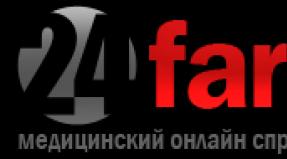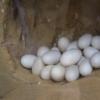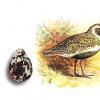Pevzner diets: a complete list. Pevzner diets Pevzner unloading diets
The main purpose of diet number 5 according to Pevzner is to spare the function of the liver and treat diseases of the biliary tract by limiting the intake of fats with a normal intake of proteins and carbohydrates. In addition, table number 5 helps to stimulate intestinal activity and normalize cholesterol levels.
Indications
:
chronic hepatitis, acute cholecystitis and hepatitis during the recovery period, cholecystitis and cholelithiasis without exacerbation, cirrhosis of the liver in the absence of liver failure, in all cases without concomitant diseases of the gastrointestinal tract.
general characteristics
: physiologically normal content of proteins and carbohydrates with limited refractory fats, nitrogenous extractives and cholesterol; the diet is enriched with lipotropic substances (lecithin, methionine, choline) and contains a significant amount of fiber and liquid; the diet contributes to the normalization of impaired functions of the liver and biliary tract, the regulation of cholesterol and fat metabolism, the accumulation of glycogen in the liver, stimulates bile secretion and intestinal motility.
: proteins 100 g (60% animals), fats - 80-90 g (30% vegetable), carbohydrates 400-450 g, energy value - 2800-2900 kcal.
: bread of any yesterday's baking or dried; milk, kefir, curdled milk, sour cream as a seasoning for dishes, non-acidic cottage cheese; cereal, vegetable, milk soups, cabbage soup and vegetarian borscht; lean meats (beef, chicken, rabbit, turkey) boiled or baked, doctoral and dietary sausages; fish of low-fat varieties in a piece, boiled, baked, aspic (on vegetable broth), stuffed; boiled pasta; baked protein omelet, no more than one yolk per day is allowed; cereals in assortment in the form of cereals and puddings with the addition of carrots, dried fruits and cottage cheese; raw, boiled or baked vegetables; fruits and berries of non-acidic varieties, kissels, compotes, jelly, sugar, honey, jam, marmalade, marshmallow; parsley, dill, cinnamon, vanillin; tea (possible with lemon), coffee with milk, vegetable, fruit and berry juices, rosehip broth.
Excluded foods and dishes
: fresh bread and rich bakery products; okroshka and soups on mushroom broth; fatty meats (duck, goose, game, brains, liver and kidneys), canned food and smoked meats; fatty fish, smoked, salted fish, canned food, granular red and black caviar; hard-boiled or fried eggs; cream, cottage cheese with high acidity; radishes, radishes, turnips, legume dishes, spinach, sorrel, garlic, mushrooms and pickled vegetables; hot sauces, mustard, pepper and horseradish; ice cream, chocolate and cream products; coffee, cocoa, and cold drinks.
Diet
: dishes are cooked boiled or steamed; food is taken warm 5 times a day.
Approximate one-day diet menu number 5.
Breakfast: cottage cheese casserole in sour cream (140 g), oatmeal milk porridge (200 g), tea (200 g).
Dinner: milk soup (500 g), cabbage rolls stuffed with rice and boiled meat (250 g), apple juice jelly (125 g).
afternoon tea: tea (200 g), crackers (25 g).
Dinner: semolina casserole (250 g), compote (200 g).
For the night: kefir (200 g).
Diet number 5a
Indications
:
chronic hepatitis, acute cholecystitis and hepatitis during the recovery period, cholecystitis and cholelithiasis without exacerbation, cirrhosis of the liver, accompanied by severe inflammatory processes in the stomach and intestines; after operations on the biliary tract.
general characteristics
: a physiologically complete diet with a sufficient content of proteins and carbohydrates, while limiting the amount of fat, salt, with the exception of foods high in purines, cholesterol, nitrogenous extractives, oxalic acid, coarse fiber; in the diet of diet No. 5, the content of lipotropic substances, such as lecithin, choline, methionine, water and vitamins, is increased.
Chemical composition and energy value
: proteins - 80-100 g (60% animals), fats - 70-80 g (20-25% vegetable), carbohydrates - 350-400 g, energy value - 2400-2800 kcal).
Recommended foods and dishes
: yesterday's wheat bread or dried, unbread biscuits; milk soups half-and-half with water, vegetarian soups with mashed vegetables and cereals, puree soups; lean beef, rabbit, turkey, skinless chicken in the form of minced meat products, boiled or steamed; low-fat fish, boiled and steamed, aspic on vegetable broth; steam protein omelet, from half to one whole yolk per day; milk, non-acidic kefir, fat-free cottage cheese, sour cream in dishes, grated mild cheese; butter and refined vegetable oil in small quantities in dishes; well-boiled cereals or grated in milk in half with water (semolina, rice, oatmeal and buckwheat), boiled vermicelli; boiled, steamed or pureed raw vegetables, boiled or stewed pumpkin and zucchini; ripe sweet fruits and berries in raw form, kissels, jelly, marshmallows, marshmallows, honey, sugar, jam; tea with lemon, milk, coffee with milk, rosehip broth, sweet fruit and berry juices.
Excluded foods and dishes
: rye, as well as any fresh bread, pastry and puff pastry products; meat, fish, mushroom broths, from non-mashed vegetables and cereals; fatty meats, goose, duck, game, liver, kidneys, brains, fried meat in pieces, smoked meats, sausages, canned food; fatty fish, smoked, salted, stewed, fried, canned, caviar; fried and hard-boiled eggs; milk in its natural form, fatty and high acidity cottage cheese, cream, spicy cheese; millet, barley and pearl barley, crumbly cereals, legumes; radish, turnip, radish, cabbage, sorrel, spinach, garlic, onion, pickled, salted and pickled vegetables, mushrooms; sour hard fruits, berries with hard grains, spices, chocolate, halva, products with cream, ice cream; coffee, cocoa, cold and carbonated drinks.
Diet
: boiled food is consumed liquid and pureed 5 times a day in a warm form.
Approximate one-day diet menu No. 5a.
Breakfast: soft-boiled egg (100 g), pureed oatmeal milk porridge (250 g), tea with milk (200 g).
Dinner: mashed pearl barley soup with vegetables (500 g), steamed meat chops with milk sauce (160 g), mashed potatoes (240 g), fruit jelly (200 g).
afternoon tea: baked apples (100 g).
Dinner: steam curd soufflé (140 g), tea (200 g).
For the night: fruit jelly (200 g).
All day: wheat crackers (100 g), butter (25 g), sugar (25 g).
Diet number 5p
I option
Indications
:
acute pancreatitis (from the 3-4th day) and exacerbation of chronic pancreatitis at the beginning of treatment.
general characteristics
: a diet with a low energy value, a normal protein content, a significant restriction of fats and carbohydrates due to the exclusion of foods containing coarse fiber and stimulating the secretion of the digestive glands; contributes to the inhibition of the external secretory function of the pancreas, the synthesis of protein necessary for the construction of pancreatic enzymes, the prevention of fatty infiltration and dystrophy of the pancreas and liver.
Chemical composition and energy value
: proteins - 80 g (30-35% animals, fats - 40-60 g (25% vegetable), carbohydrates - 200 g, energy value - 1500-1700 kcal.
Recommended foods and dishes
: wheat bread crackers (50 g per day); soups mucous from semolina, oatmeal, rice, pearl barley with the addition of boiled meat; lean meat, beef, rabbit, chicken, turkey boiled or steamed in pureed form; lean fish in pureed form; steam protein egg omelette, up to half the yolk per day; milk added to dishes, non-acidic curd in the form of a paste; grated porridge, semi-viscous (buckwheat, oatmeal); potatoes, carrots, zucchini, pumpkin, cauliflower in the form of mashed potatoes; pureed compotes, jelly, jelly, cooked on xylitol or sorbitol; weak tea, rosehip broth.
Excluded foods and dishes
: flour products; soups on meat and fish broth, decoction of mushrooms and vegetables, cabbage soup, borscht, okroshka; fatty meats, lamb, pork, goose, duck, liver, kidneys, brains, fried and stewed, smoked meats, sausages, canned food; fatty fish, fried, stewed, smoked, salted, canned, caviar; boiled or fried eggs; milk in its natural form, cream, lactic acid drinks, sour cream, fatty cottage cheese, salty and fatty cheese; millet and barley crumbly cereals, pasta, legumes; white cabbage, radish, turnip, radish, swede, spinach, sorrel, garlic, onion; coffee, cocoa, chocolate, vegetable and fruit juices.
Diet
: food is boiled or steamed and consumed in a liquid and semi-liquid consistency, splitting into 5-6 doses per day.
Approximate one-day menu of the I option of diet No. 5p
1st breakfast: protein steam omelette (110 g), oatmeal porridge in water (280 g), tea (200 g).
2nd breakfast: carrot soufflé (100 g), tea (200 g).
Dinner: pureed rice soup (200 g), steamed fish soufflé (120 g), fruit jelly on xylitol (125 g).
afternoon tea: fat-free cottage cheese (60 g), rosehip broth (200 g) with crackers.
Dinner: meat soufflé from boiled meat (110 g), pumpkin steam soufflé (200 g).
For the night: rosehip decoction (200 g).
All day: crackers (50 g), sugar (5 g).
Diet number 5p
II option
Indications
:
chronic pancreatitis in the stage of subsiding exacerbation (starting from the 6th day, after option 1 of diet No. 5p) or remission (within 2-4 months).
general characteristics
: a diet with a normal energy value with a high content of protein, lipotropic substances and vitamins, limiting the amount of carbohydrates and refractory fats, cholesterol, coarse fiber.
Chemical composition and energy value
: proteins - 130-140 g (60-70% animals, fats - 80 g (15-20% vegetable), carbohydrates - 300-350 g, energy value - 2500-2700 kcal).
Recommended foods and dishes
: similar to diet No. 5a, except for honey, sugar, jam, confectionery, etc .; instead of sugar, xylitol is partially used (30-40 g).
Excluded foods and dishes
: similar to diet number 5a
Diet
: boiled or steamed food is served in crushed form 5-6 times a day.
Sample one day menuII version of the diet number 5p
1st breakfast: boiled chicken (55 g), buckwheat milk porridge without sugar (280 g), tea (180 g).
2nd breakfast: baked apples without sugar (120 g), calcined cottage cheese (100 g).
Dinner: vegetarian vegetable soup (250 g), boiled meat stew with vegetables (55/240 g), dried fruit compote on xylitol (180 g).
afternoon tea: steam meatballs in milk sauce (110 g).
Dinner: boiled cod (90 g), curd soufflé without sugar (130 g), tea (180 g).
For the night: kefir (180 g).
This system of diets was created by Professor M.I. Pevzner, one of the founders of dietology and gastroenterology in the USSR. Despite the fact that dietary tables were compiled in the 30s of the last century, they have not lost their relevance so far.
The Pevzner diet system includes 15 treatment tables corresponding to certain groups of diseases. Some of the tables are divided into categories with letter designations. Categories of therapeutic diets correlate with the stage or period of the course of the pathological process: exacerbation (peak) of the disease → fading exacerbation → recovery.
Diet tables according to Pevzner are most in demand in the complex treatment of diseases of patients in hospitals and sanatoriums. They are also advisory in nature to patients when they are outside medical institutions.
When prescribing an appropriate medical dietary table, you need to know:
- The calorie content of the Pevzner diet is designed mainly for hospitals where the physical activity of patients is lower. Therefore, outside the hospital, the energy intensity of food should be increased.
The fluid entering the body can be "bound" - this is inode contained in solid foods (vegetables, fruits, bread, etc.). And "free" - in the form of juices, drinking water, tea, fruit drinks, etc.
The comfort temperature of the food consumed is approx.25-35°C, hot dishes - no higher than 57-62°C, cold dishes - no lower than 15°C.
Alcohol in any form is prohibited!
Deficiency in the diet of vitamins and minerals is compensated by the appointment of their dosage forms, as well as the intake of permitted dietary supplements.
The usefulness of the diet largely depends on the variety of products included in its composition.
website
Composition table number 0: slimy soups, pureed, weak broth (from chicken or rabbit), rice water, jelly, kissels, tea with sugar, rosehip broth, juices of fresh berries and fruits, diluted with sweet water, low-fat yogurt without filler.
Indications: diet for acute and exacerbations of chronic intestinal diseases, accompanied by diarrhea (diarrhea).
The goal of diet number 4 according to Pevzner : provide nutrition in case of indigestion, reduce inflammation, fermentation and putrefactive processes in the intestines, help normalize the functions of the intestines and other digestive organs.
Indications: chronic hepatitis without exacerbation, chronic cholecystitis without exacerbation, cholelithiasis, chronic diseases of the biliary tract without exacerbation, acute diseases of this zone during the recovery period.
Target dietsNo. 5p: normalize the function of the pancreas, provide mechanical and chemical sparing of the stomach and intestines, reduce the excitability of the gallbladder, prevent fatty infiltration of the liver and pancreas.
Indications: 1) acute nephritis during the recovery period (from the 3rd-4th week of treatment);2) chronic nephritis without exacerbation and kidney failure.
The purpose of the appointment of diet number 7: moderate sparing of kidney function, reduction of hypertension and edema, improved excretion of nitrogenous and other metabolic products from the body.
Indications : 1) mild to moderate diabetes mellitus: patients with normal or slightly overweight do not receive insulin or receive it in small doses (20-30 IU); 2) to establish carbohydrate tolerance and the selection of doses of insulin or other drugs.
Indications: 1) tuberculosis of the lungs, bones, lymph nodes, joints with a mild exacerbation or its attenuation, with reduced body weight; 2)exhaustion after infectious diseases, surgery, injuries.
In all cases - in the absence of lesions of the digestive system. Variants of diet No. 11 were developed taking into account the localization and nature of the tuberculosis process, the state of the digestive organs, and the presence of complications.
- Soup is the basis of the diet. They are cooked in vegetable broth with cereals. Soups can also be prepared with milk, fruits.
- Steamed or baked pork meat (and also tongue, beef meat, low-fat ham).
- Poultry meat (usually chicken).
- Black fish and caviar (fish can be poured).

- Dairy and sour-milk products (sour cream, low-fat cottage cheese, fermented baked milk). Dairy or sour-milk products with the Pevsner diet are allowed to consume up to 200 g per day. From them (or with them) you can cook pancakes, cheesecakes, dumplings and enjoy the taste.
- Porridges cooked on water, in which milk is added after cooking.
- puddings.
- Pasta or vermicelli baked with cottage cheese or milk or sour cream.

- Bread (dried) - and you can eat white, and black, and gray. Flour products that can be consumed also include crackers without seasonings, biscuit cookies, biscuit (dry), unbread buns or pies. Flour products for the Pevzner diet are prepared without butter and without margarine.

Hard-boiled eggs are allowed (no more than 1 per day). You can afford an omelet from one egg, but no more.
Berries and fruits are also allowed. They can be eaten raw and baked. For example, baked apples.

Pevzner in his diet does not starve people for days without sweets, allowing them to eat jam from natural fruits, various jams and marmalade from berries, as well as honey (flowers in particular), marshmallows, marmalade, candied fruits and even sugar. But there are restrictions - up to 70 grams per day.
Diet No. 5 also contains juices, natural, of course - from vegetables and fruits. Even coffee with milk or cream is allowed, tea with milk (it is well absorbed), decoctions of herbs, in particular, vitamin rosehip decoction.
Allowed butter, vegetable oils, which can be added to cereals and salads during the diet.
It is allowed to use sauces made from berries, fruits and dairy products.
Greens and spices can also be used in diet number 5, seasoning them with dishes.

Prohibited foods in the Pevsner diet
- Alcoholic drinks.
- Everything fried, raw and hot smoked products, spicy dishes.
- Fatty meat, fatty fish, internal organs (liver, heart, lungs).
- Canned products.
- beans.
- Mushrooms.
- Onion, radish, garlic, turnip, sorrel.
- Very rich baked flour products.
- Cocoa products (coffee), chocolate in any of its manifestations, including hot chocolate.
- Any kind of soda.
- Vinegar in dishes.
- Salt (partial ban on this product - no more than 10 grams per day).
The famous Table 5 according to Pevsner is traditionally prescribed for people suffering from biliary dyskinesia, as well as cirrhosis of the liver and chronic hepatitis.
The most important thing in the therapeutic diet 5 for these types of diseases is a special, competent and clear diet.
The author of the diet, Pevsner, was sure that sufficiently large breaks between main meals cause dyskinesia. To prevent such a possibility, it is best to split portions into five to six times a day, this will also help with an existing problem, because this way of eating ensures the regularity of the outflow of bile. During the introduction of this practice by Pevzner, the vast majority of physicians agreed with him, putting a smaller load on the liver as a plus.
To date, some American nutritionists strongly disagree and prescribe breaks of twelve to fifteen hours for patients.

Diet for the liver 5 according to Pevzner
- One of the most important conditions for a therapeutic diet is the temperature of the food served. Food should be warm, not hot or cold.
- It is necessary that the diet be enriched with methionine, choline and lipotropic products. You should also constantly replenish the glycogen store of the liver.
- If you like food with a lot of protein, then there are no restrictions on this, but you need to exclude all refractory fats, because in order to assimilate them, the gastric bladder has to switch to an increased activity mode.
- 100 g protein
- 300 g of carbohydrates,
- slightly less than 100 g of fat, where the share of vegetable is 30%.
Since this diet is “age-related”, the views of nutritionists have already changed quite a lot, it is now recommended to reduce the percentage of animal fats to 20%.
To obtain the required proportions of carbohydrates, it is best to eat dried bread or cereals (oatmeal, buckwheat, rice, etc.). To prepare cereals, it is best to use water, although milk with a low percentage of fat can also be used. You can also get carbohydrates from egg whites, but in no case should you eat yolks.
Proteins can be obtained from a wider list than carbohydrates. The most basic are: chicken breast, fish, proteins, lean meats, and low-fat dairy products. But nutritionists also do not prohibit the use of not the most healthy food, doctor's sausage, for example.
Fats can be obtained from vegetable or butter, from sour cream.
What else is not forbidden by the diet? Vanillin, cinnamon, tea, coffee, preferably weak, vegetable or fruit juices. Desserts from soufflé, light fruit jelly or berry jelly will not interfere with the process.
The basis of the therapeutic diet: menu for the week
- Breakfast: fresh cottage cheese casserole, you can add sour cream; boiled oatmeal; coffee.
- Lunch: rice soup, cabbage rolls with rice, jelly.
- Snack: croutons with rosehip broth.
- Dinner: semolina porridge, compote.
- Before going to bed: fat-free kefir or yogurt.
Strictly Prohibited Products
It is necessary to choose sausages or sausages very carefully, because since the time of Pevzner, GOSTs have changed, according to which the amount of fat contained in them was previously strictly controlled.

Diet 5 according to Pevzner strictly excludes fatty cheeses, fatty meat and fish, liver, kidneys, canned food, smoked meats. From desserts, you will have to say goodbye to chocolate, cakes, cream.
Diet according to Pevzner table number 5a
The diet “treatment table No. 5 according to Pevzner” has a branch with the addition “ a». Table No. 5A according to Pevzner is suitable for patients with hepatitis and cholecystitis:
- The diet focuses on reducing the burden on the liver and gallbladder.
- The amount of food consumed is not fixed in any way; in this diet, the emphasis is on reducing the load on the liver.
- All products are consumed warm in a fractional diet.
Allowed table products No. 5a
There are no significant changes in the list of products compared to the progenitor of this type of therapeutic diet.
However, there are nuances in the form of food served on the table. The food should be mashed, free of coarse parts, and of high quality.
- carbohydrates - 300 g;
- proteins - 60 g;
- dietary fats - 50 g.
The main "moments" of the diet:
- Rice, buckwheat porridges on the water are welcome, they must all be crushed. Recipes for a therapeutic diet are 5 standard, except for the last paragraph. The method of preparing the porridge itself is classic, everything is boiled in water, and then crushed through a sieve.
- Fresh bread should be discarded, because the yeast will negatively affect the body. Allowed, perhaps, crackers from white bread.
- The number of eggs is recommended to be reduced to one boiled.
- White meat and lean fish are welcome. For easier consumption of these products, you need to make minced meat from them, which will later turn into cutlets or meatballs with rice instead of flour.
- Cheeses will have to be completely abandoned. Cottage cheese should be passed through a sieve before use.
- Fruits can be consumed in 100-150 g. But not in their pure form! Whole fruits are too hard to digest, you need to make puree, jelly, soufflé out of them. Avoid those fruits that have starch in their composition (it is strictly prohibited on this diet).
- Vegetables are suitable for taking only in any dishes, in no case should they be used as independent products.
Prohibited products of the table number 5a
- It is necessary to remove from your diet any food that can cause fermentation inside the stomach, in other words, all foods that have yeast in their composition. It is for the same reason that it is forbidden to eat fresh bread. Only crackers are allowed!
- No bean and soy products, as well as mushrooms, broths infused with mushrooms are no exception.
- Fried foods, foods containing refractory fats, palm oil, aldehydes are prohibited.
- Cottage cheese curds, yogurts, processed cheeses, cottage cheese with additives, sweets also do not have a place to be with such a diet.
Diet according to Pevzner table number 5p
Another branch of the big diet number 5 - table number 5 P according to Pevzner. Suitable for patients with pancreatitis.
The peculiarity of this therapeutic diet 5 is a reduced amount of kilocalories up to 1800, a decrease in carbohydrates up to 200 g, proteins up to 100 g, fats up to 80 g. These restrictions are necessary to reduce the ingestion of extractives in food, because they strongly "stimulate" the pancreas. Such foods include fatty foods, all fried foods, as well as seasonings.
Allowed table products No. 5p
Pevzner's therapeutic dietary tables for various diseases will help to recover faster after pancreatitis.
What can you eat while on a diet?
- If you want fish, then its use is not prohibited, but with one condition - the fish must be lean.
- Soups are allowed mostly vegetarian. Pumpkin, zucchini, cabbage are perfect for making diet soup.
- You can cook cereals, and the method of preparing cereals is not so hard, you can dilute the water by half with milk. Suitable for cereals: buckwheat, thin vermicelli, oatmeal, white rice.
- Boiled eggs are allowed, while the yolk must be separated from the protein, since only half of the yolk is allowed per day, and the protein can be eaten whole.
- Low-fat cheeses are allowed. Milk is permissible only fresh, not older than three days (subject to good lactose tolerance).
Prohibited products of the table No. 5p
- Consumed foods and drinks should be warm. The diet should be completely sugar-free.
- No refractory fats, palm oil. Purchased yogurts, pastries, sauce should not be on the table.
- Chocolate, cakes, various desserts, fatty fish, including caviar, sausage, lard and canned food should be excluded.
- All soups consumed should be served warm, but not hot. Therefore, soups that are usually served cold should be avoided. Soups with broth on meat also go out of the diet.

Treatment table 5 according to Pevzner and its varieties will help you maintain the health of the liver, gallbladder and pancreas. Yes, this diet is many years old! All the better. Time has proven its effectiveness.
My reader! Now you know what nutrition is according to Pevzner table 5. Eat right, given your disease!
The soft diet (often referred to as "Pevsner's tables") is designed to treat fifteen different types of diseases. Each ailment has its own menu and rules for choosing products, however, the general "assembly point" of all "tables" that facilitate recovery coincides with the basic principles of any. And this invariably attracts the attention and interest of not only patients, but also completely healthy people who are passionate about the idea of proper, sparing nutrition to Pevzner's diets.
Professor Pevzner's sparing diets daily help thousands of patients to speed up and "soften" the process of recovery from a particular disease, without resorting to additional drug therapy ...
When Nutrition Becomes Medicine: Pevzner's Bland Diet
The concept of a sparing diet into the medical, and eventually into the philistine lexicon, was introduced by the Soviet doctor, one of the fathers of Russian dietology and clinical gastroenterology, Manuil Isaakovich Pevzner. He fruitfully worked from 1921 to 1951, but his activities were tragically suspended by the Stalinist regime - Dr. Pevzner was slandered and included in the case of "killer doctors." The Moscow clinic founded under his leadership was actually dispersed.
Dr. Pevzner did not survive the blow: in 1952 he died suddenly of a heart attack. But, fortunately, his invaluable developments did not disappear without a trace, and when the cult of personality was debunked, 15 types of sparing health-improving diets compiled under the guidance of Manuil Isakovich, which are plans for therapeutic and regenerative nutrition for various diseases, returned to clinical practice.
Pevzner's sparing diets were called "tables", each of which, for ease of orientation and classification, was assigned its own number.
Each of the "tables" corresponds to a certain set of allowed foods and dishes, as well as cooking rules. Using these guidelines, it is not difficult to create a sparing diet menu on your own in order to receive nutrition that not only does not harm the exacerbation of a particular disease, but also provides the best conditions for recovery.
Options for treatment tables according to Pevzner
It is prescribed for the diagnosis: peptic ulcer in the period after exacerbation (up to 12 months), as well as gastritis with high acidity.
It is prescribed for the diagnosis: chronic gastritis with low acidity or in its absence, chronic colitis (without exacerbation).
It is prescribed for the diagnosis: constipation.
It is prescribed for the diagnosis: acute bowel disease, colitis.
It is prescribed for the diagnosis: diseases of the liver, gallbladder, biliary tract without the stage of exacerbation.
It is prescribed for the diagnosis: gout, nephrolithiasis with the discharge of stones, consisting mainly of urates.
It is prescribed for the diagnosis: chronic kidney disease with no symptoms of chronic renal failure.
It is prescribed for the diagnosis: obesity as the main disease or concomitant with other diseases that do not require special diets.
It is prescribed for the diagnosis: diabetes mellitus of moderate and mild severity.
It is prescribed for the diagnosis: diseases of the cardiovascular system with circulatory failure degree I-IIA.
Table No. 11 - is prescribed for the diagnosis: tuberculosis of the lungs, bones, lymph nodes, joints with a mild exacerbation or attenuation, exhaustion after infectious diseases, operations, injuries.
Table No. 12 - is prescribed for the diagnosis: functional diseases of the nervous system.
Table No. 13 - is prescribed for the diagnosis: acute infectious diseases.
Table number 14 - is prescribed for the diagnosis: urolithiasis (phosphaturia).
Table No. 15 - is prescribed for the diagnosis: various chronic and acute diseases of a general nature.
How to eat right at the "diet table": the basic principles of sparing diets
The rules for organizing treatment tables appropriate for a particular disease are strictly applied when providing food in hospitals, dispensaries and sanatoriums. The list of products allowed on a particular sparing diet can vary significantly - for example, it strictly prohibits food that stimulates the production of gastric juice (including raw vegetables and fruits), and the doctor, on the contrary, may recommend introducing white cabbage and citrus fruits into the diet fruits.
The approach to the use of protein products also varies: for some diseases of the gastrointestinal tract, a menu with a relatively high content of meat, fish (seafood), eggs, milk is beneficial, and, for example, recommended for constipation, the amount of protein supplied with meat food is limited to 4- 5 meals a week, but at the same time, experts advise consuming more fermented milk.
However, any nutrition plan used during the active stage of the disease or during the long-awaited period of recovery prescribes a number of general rules. Among them:
No convenience foods and fast food: all food should be freshly prepared and minimally processed industrially, hot spices, additives (in the vast majority of sparing diets - also without salt). The only exception in terms of freshness is bread: in those "tables" where it is allowed, it is recommended to use yesterday's bread, which does not cause yeast fermentation in the intestines.
Special Cooking Methods: a sparing diet involves delicate nutrition and ease of assimilation of all substances that may be useful. To do this, they need to be given the appropriate shape: food is steamed or boiled for a long time, mashed, crushed as much as possible. Any food that involves the inclusion of dense fragments (tendons, bones, peel), thorough chewing, long digestion, is prohibited, as well as products that are fraught with the risk of mechanical damage to the gastrointestinal tract (solid, dry food, coarse fiber).
Refusal of products that excite the nervous system: including those containing alcohol, sugar, white flour, natural stimulants (with caution and not in all sparing diets - rejection of tea, coffee, citrus fruits). After all, “calmness, only calmness” is required not only for those who, on the recommendation of specialists, adhere to diet No. 12 according to Pevzner ... Strong, not loosened nerves are the key to bodily health in general, for everyone.
Eating food at a comfortable temperature: the served dishes should have a temperature of 40 to 60 degrees Celsius; on a sparing diet, both piping hot and excessively cold food, which additionally burdens the organs of the gastrointestinal tract, should be avoided. In addition, extreme serving temperatures impair the absorption of nutrients.
Fractional nutrition: most of the Pevzner diet tables in their recommendations are based on the principle: more frequent (5-7 times a day), but small portions in volume - this allows the digestive system to more easily cope with its task.
Is medical nutrition suitable for someone who is healthy?
Pevzner's sparing therapeutic diets are a source of inspiration for those who are thinking about normalizing their diet. Today, many people use Dr. Pevzner's menu as general recommendations for compiling a diet: "" (for ulcers and gastritis) and "" (for obesity and metabolic disorders) are most in demand in this capacity.
Of course, any diet requires prior approval from the doctor, especially since the recommendations on the "tables" are not universal, and when prescribing medical nutrition, the patient's individual characteristics are taken into account.
However, the general principles of a sparing diet regarding the rejection of high-calorie and industrially processed foods, as well as the rules for cooking, coincide with the basic rules of a healthy diet, and they can be adopted if you want to improve your health and lose weight.
But do not forget: those who are healthy should pay attention to the balance of the diet in terms of proteins, fats, carbohydrates and fiber, and to the sufficient intake of fresh plant foods, and to the diversity of nutrition, so blindly copy the diet of any Pevzner diet without medical hardly worth the evidence.



















